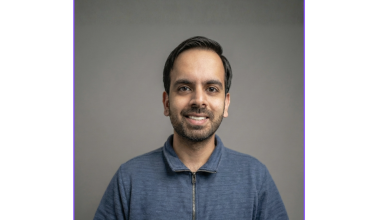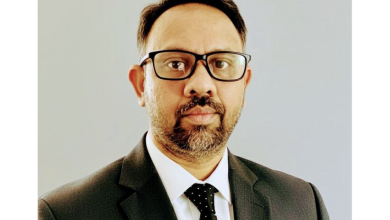
Divya Parashar is a seasoned technology executive and patent-holding engineer with more than 16 years of experience driving enterprise innovation across AI, cloud-native platforms, and decision intelligence. Known for his award-winning leadership and active contributions to architecture boards and global tech forums, Divya has helped shape the next generation of scalable, intelligent systems while mentoring teams through rapid technological change. In this interview, he shares how the role of engineering leadership is being redefined, blending technical fluency with strategic influence, ethical responsibility, and organizational resilience in a time of relentless transformation.
How have expectations for engineering leaders evolved with the rise of AI, cloud infrastructure, and rapid product cycles?
The expectations have fundamentally shifted. It’s no longer just about building systems that scale; it’s about creating systems that adapt. Engineering leaders today are expected to be not only technologists but also strategists, change agents, and cultural stewards. With AI and cloud-native paradigms accelerating delivery cycles, there’s a stronger push for real-time experimentation, faster learning loops, and proactive innovation. Leaders are expected to make bets on emerging tech while ensuring robustness and compliance. You’re no longer just solving problems; you’re anticipating what’s next and designing teams and systems that can evolve in lockstep.
What skills or qualities now define a successful engineering leader beyond traditional technical expertise?
Curiosity and adaptability have become table stakes. Beyond technical depth, I’d say three things matter most: systems thinking, communication, and emotional intelligence. You need to connect dots across all disciplines, including data science, infrastructure, product, and translate complexity into clarity. Engineering leaders are increasingly the bridge between deep tech and business strategy, so being able to listen, challenge assumptions, and influence across teams is critical. And perhaps most importantly, resilience. The pace of change is relentless, and you need to be able to lead through ambiguity without burning out your teams.
How do you personally balance the need for deep technical credibility with cross-functional strategic influence?
I try to stay hands-on enough to ask the right questions and understand the implications of technical decisions. I won’t be in the weeds of every PR or architecture review, but I need to understand the why behind them. That builds trust with engineers. At the same time, I make a conscious effort to align our technical priorities with broader organizational goals—be it customer experience, time-to-market, or cost optimization. You have to be bilingual, in a sense: fluent in code and fluent in context. That’s what unlocks true influence.
In your experience, what’s the biggest leadership challenge when integrating AI into existing systems or workflows?
The biggest challenge is managing the gap between AI promise and operational reality. AI often starts as a science project and hits friction when it’s time to scale or integrate with legacy systems. There’s also the challenge of trust: how do you ensure explainability, reliability, and responsible usage? As a leader, you have to balance innovation with pragmatism. That means guiding your team through pilot fatigue, aligning on use cases that truly drive value, and ensuring cross-functional readiness, especially from data engineering, compliance, and product teams.
How do you guide your teams through constant architectural change, especially with cloud-native and distributed systems?
First, I encourage a mindset shift—treat change as a feature, not a bug. We invest in strong platform foundations and observability so that change doesn’t feel like chaos. I’m also a big believer in progressive modernization: don’t boil the ocean. Break the work into evolutionary phases, aligned with business milestones. Architecturally, this might mean designing for interoperability, minimizing coupling, or investing in event-driven patterns. From a leadership standpoint, it’s about creating psychological safety so teams feel empowered to refactor, iterate, and learn without fear of failure.
What role should engineering leaders play in shaping ethical frameworks around the use of AI and automation?
A critical one. Engineering leaders are uniquely positioned at the intersection of creation and consequence. We’re not just building tools—we’re shaping systems that make decisions on behalf of humans. That means we need to be active voices in discussions around fairness, bias, transparency, and accountability. I advocate for ethics being baked into the design and development process, not tacked on at the end. Whether it’s establishing internal review boards, partnering with legal and policy teams, or investing in fairness audits, we need to lead with intention.
How do you approach team development and hiring in a world where both technical and AI fluency are increasingly critical?
I look for learners more than experts. AI fluency is important, but what’s more valuable is someone’s willingness to engage with new ideas and work across domains. We prioritize T-shaped engineers who are deep in one area but collaborative and curious across the stack. For team development, I push for horizontal learning opportunities: internal workshops, shadowing data science teams, or co-building prototypes with ML engineers. Building AI-native teams isn’t just about hiring; it’s about creating pathways for growth, experimentation, and interdisciplinary learning.
What advice would you give to the next generation of engineering leaders preparing for an AI-driven future?
Don’t just chase the tech; also understand the impact. Stay curious, but be deliberate. Learn how AI systems work, but also study how they affect people and processes. Build range: dive deep when needed, but always zoom out to see the larger system. And invest in people—your ability to lead, coach, and inspire will matter more than your ability to ship code. In a world of constant evolution, the human side of engineering leadership is the differentiator.




